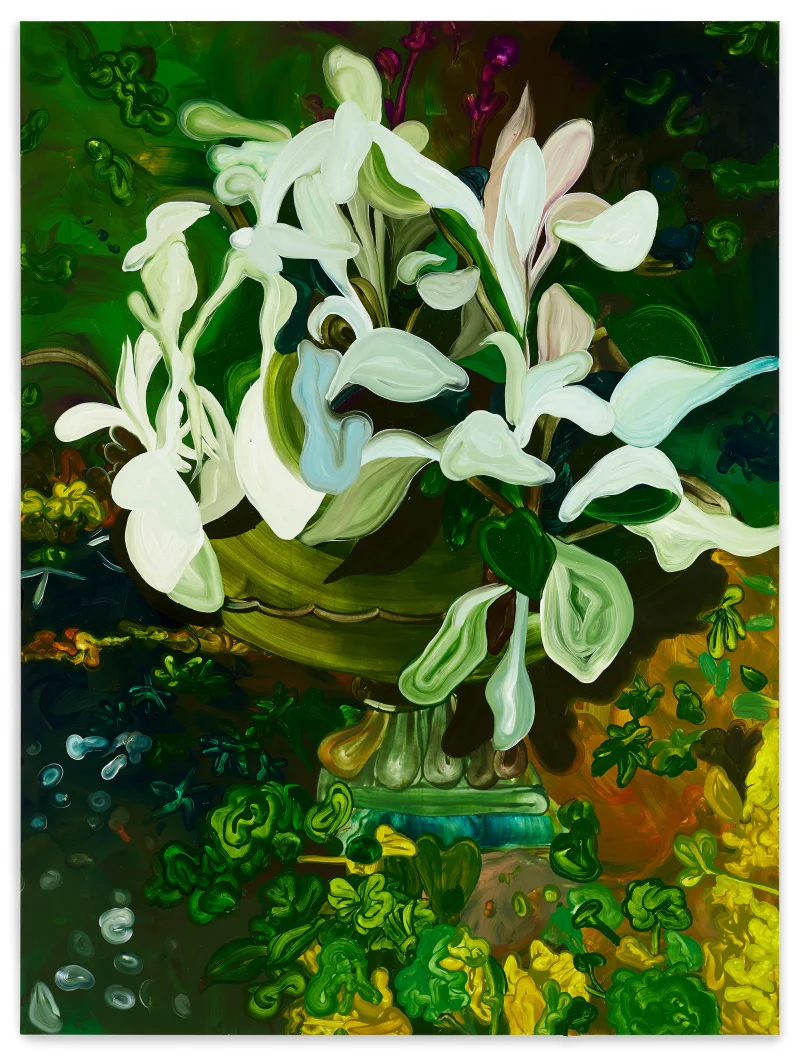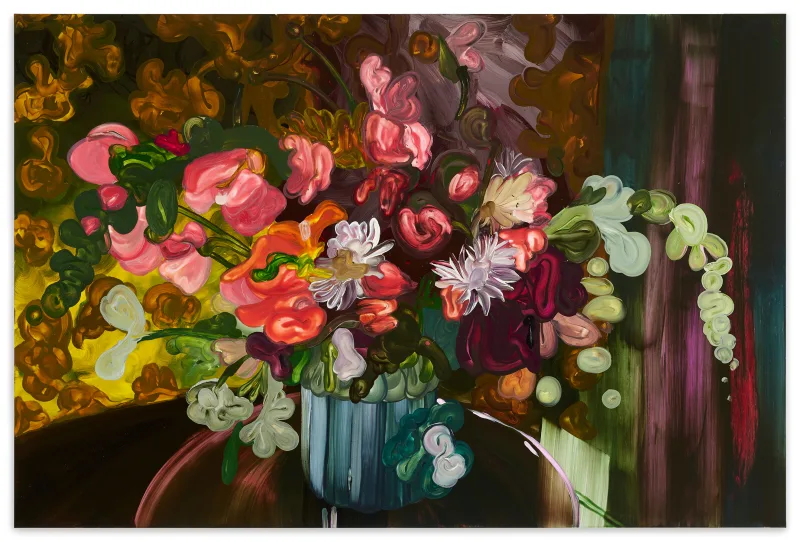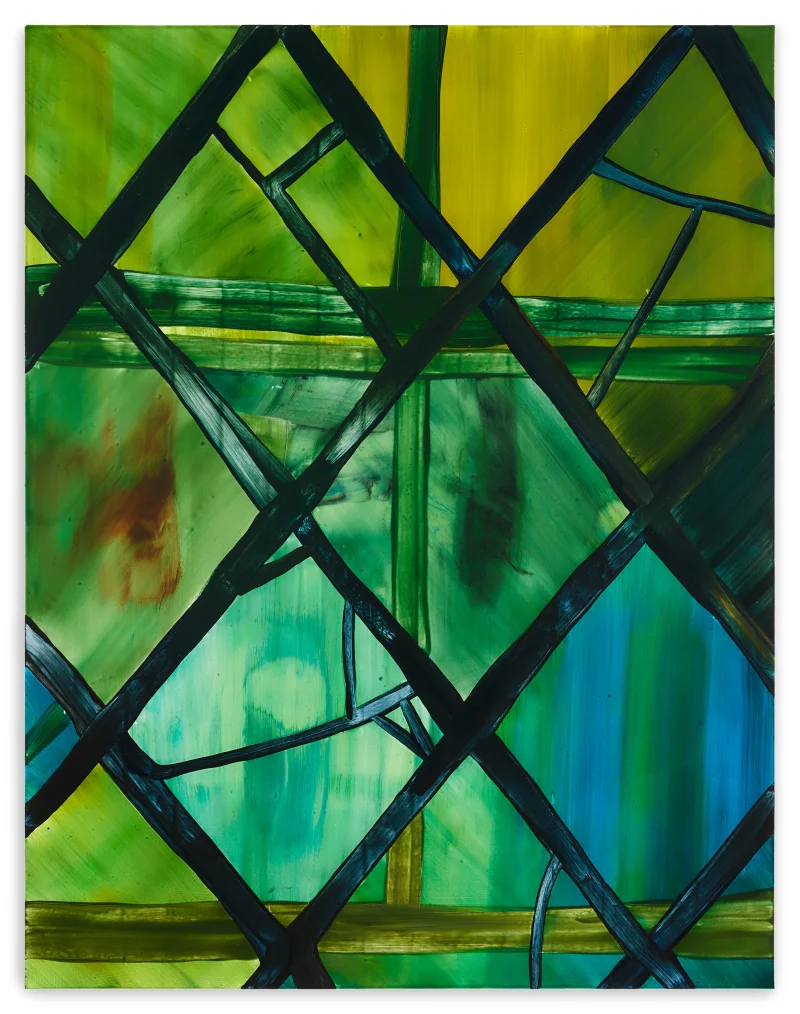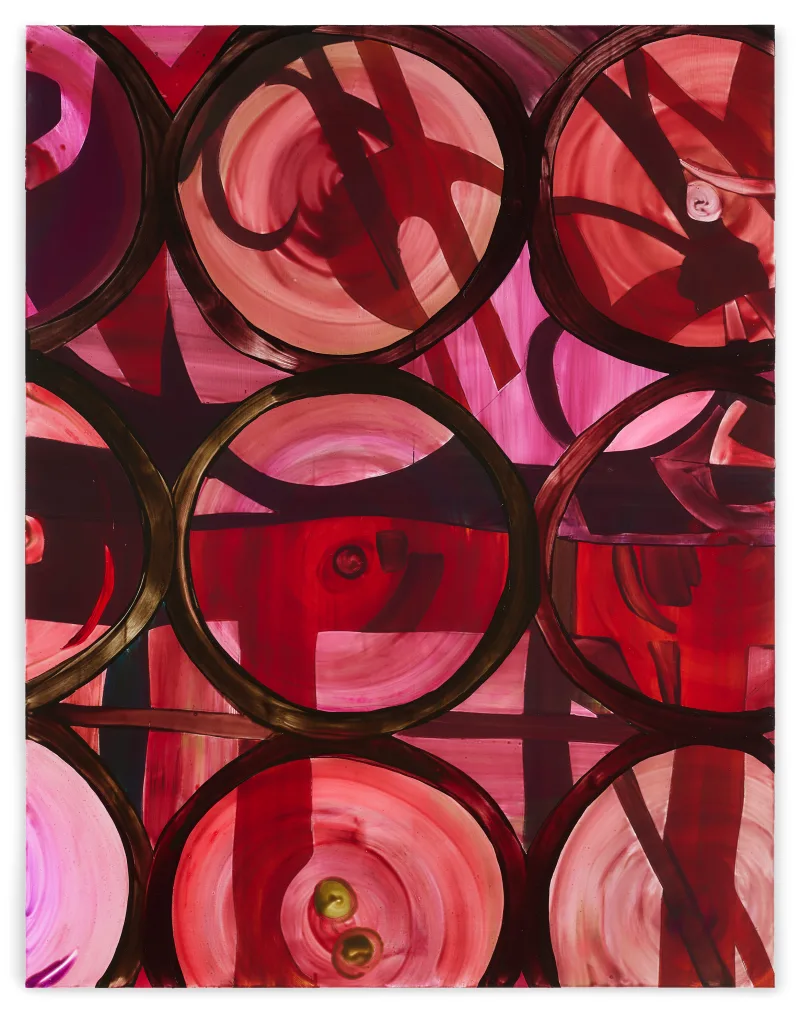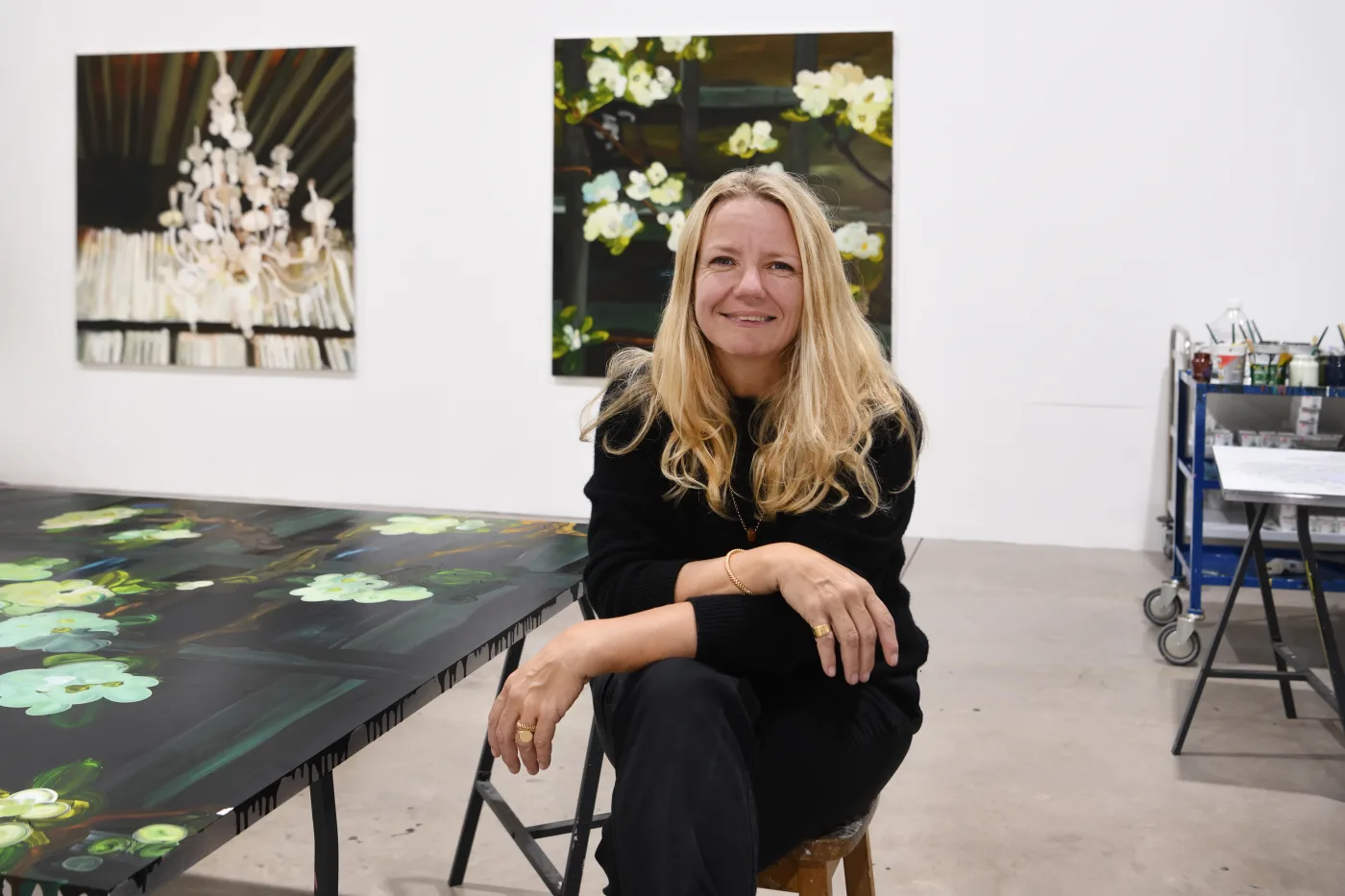
Clare Woods: A Kinder Time
Overview
Stephen Friedman Gallery, New York presents 'A Kinder Time', an exhibition of new paintings by British artist Clare Woods. This marks her first solo show with the gallery.
In this exhibition, Woods deploys still life to meditate on the fragile threshold between life and death. As Charlotte Mullins (art critic, writer and broadcaster) writes in As I Please, a major monograph recently published on the artist’s work, “while still life has historically been belittled by academic institutions for depicting inanimate objects, it is this reduction in form, this stripping out of narrative, that makes the genre the perfect vehicle through which to communicate what it means to be alive, to be human, to be afraid, to be present, to face death”. Each work in the show captures a static image, or “a life stilled” as Mullins puts it, and forces the viewer to stop, observe and look anew at seemingly banal objects or scenes.
Expanding the subject matter typically associated with still life, Woods’ compositions evolve from an archive holding thousands of found and personal photographs. Using instinctive, free-flowing brushstrokes, Woods defamiliarizes her source imagery by breaking them down into their formal elements. The artist begins with a single image, drawing a simple outline on gessoed aluminium before considering how to approach its flattened structure in paint. Working from above enables Woods to act from her shoulder rather than her wrist, adding further movement to her paintings as she pushes and smears the wet pigment across the surface.
In this new body of work, floral arrangements – traditional forms of memento mori – allude to the brevity of life. The Victory Garden (2025) depicts an abundant bouquet of cut flowers with luscious, undulating loops of paint. Set against a foreboding, dark background, the work exudes a sense of melancholia. The title of the painting refers to vegetable, fruit and herb gardens planted at private residences and public parks to supply food to British citizens during both World Wars – a subtle allusion to the proximity of danger on home soil.
Also reflecting on the imminent threat of war, The Day After (2025) is inspired by a photograph Woods took in front of Charleston in Sussex, UK, while reflecting on the conscientious objectors it housed during World War One. Bloomsbury group members Duncan Grant (1885–1978) and David Garnett (1892–1981) became agricultural laborers to avoid conscription, moving to Charleston in 1916 from London to work on a local farm. Lofty plants threaten to encroach the building by smothering one of its windows, acknowledging the house’s historical role as a place of refuge.
Stephen Friedman Gallery, New York presents A Kinder Time, an exhibition of new paintings by British artist Clare Woods. This marks her first solo show with the gallery.
In this exhibition, Woods deploys still life to meditate on the fragile threshold between life and death. As Charlotte Mullins (art critic, writer and broadcaster) writes in As I Please, a major monograph recently published on the artist’s work, “while still life has historically been belittled by academic institutions for depicting inanimate objects, it is this reduction in form, this stripping out of narrative, that makes the genre the perfect vehicle through which to communicate what it means to be alive, to be human, to be afraid, to be present, to face death”. Each work in the show captures a static image, or “a life stilled” as Mullins puts it, and forces the viewer to stop, observe and look anew at seemingly banal objects or scenes.
Expanding the subject matter typically associated with still life, Woods’ compositions evolve from an archive holding thousands of found and personal photographs. Using instinctive, free-flowing brushstrokes, Woods defamiliarizes her source imagery by breaking them down into their formal elements. The artist begins with a single image, drawing a simple outline on gessoed aluminium before considering how to approach its flattened structure in paint. Working from above enables Woods to act from her shoulder rather than her wrist, adding further movement to her paintings as she pushes and smears the wet pigment across the surface.
In this new body of work, floral arrangements – traditional forms of memento mori – allude to the brevity of life. The Victory Garden (2025) depicts an abundant bouquet of cut flowers with luscious, undulating loops of paint. Set against a foreboding, dark background, the work exudes a sense of melancholia. The title of the painting refers to vegetable, fruit and herb gardens planted at private residences and public parks to supply food to British citizens during both World Wars – a subtle allusion to the proximity of danger on home soil.
Also reflecting on the imminent threat of war, The Day After (2025) is inspired by a photograph Woods took in front of Charleston in Sussex, UK, while reflecting on the conscientious objectors it housed during World War One. Bloomsbury group members Duncan Grant (1885–1978) and David Garnett (1892–1981) became agricultural laborers to avoid conscription, moving to Charleston in 1916 from London to work on a local farm. Lofty plants threaten to encroach the building by smothering one of its windows, acknowledging the house’s historical role as a place of refuge.
Many of the works in this exhibition are connected by Woods’ interest in the symbolic and material qualities of glass. The largest painting in the show, Under The Dome (2024), captures a spiral staircase surrounded by towering vegetation in the iconic Temperate House at Kew Gardens, London. The Victorian glasshouse provides a sanctuary for some of the world’s rarest and most threatened plants. Woods became fascinated by this manmade ecosystem and how it protects flora that would otherwise perish in the UK's cold climate. Here, the elaborate glass structure becomes a metaphor for the thin veneer between life and death.
This fascination with closed environments continues in Valley Forge (2024), which is based on a photograph Woods took at The Huntington’s Botanical Gardens in Los Angeles. Inspired by the 1972 sci-fi movie Silent Running, Woods depicts lush tropical plants with a glass dome looming in the background. In the film, the spaceship Valley Forge is part of a fleet that travels into deep space to protect what little remains of the Earth’s ecosystem. Each ship carries geodesic greenhouses containing a forest or desert biome, which the crews are instructed to preserve for their eventual return to Earth. Reflecting on the future of the planet, this painting resonates in the context of the global climate crisis.
Other paintings in the show manifest Woods’ love of Venice – another environment on the brink of collapse due to global warming – and its historic relationship with glass. The city’s dense urban landscape often gives way to buildings that are only visible by their façades along the canal, with windows lining its labyrinthine streets providing snippets of secluded interiors. Woods’ depictions of vibrant panes of Murano glass, rendered here with translucent washes of paint, speaks to her interest in the boundaries between public and private spaces.
In A Kinder Time, Woods’ paintings oscillate between the extremes of life and death, inside and outside, and the seen and unseen. The artist says that still life allows her to “use beauty to show and articulate fear”. In this exhibition, Woods pushes our interpretation of what the genre can be and in turn reveals the intricacies of what it means to be human.
Stephen Friedman Gallery, New York presents 'A Kinder Time', an exhibition of new paintings by British artist Clare Woods. This marks her first solo show with the gallery.
Installation Views



















